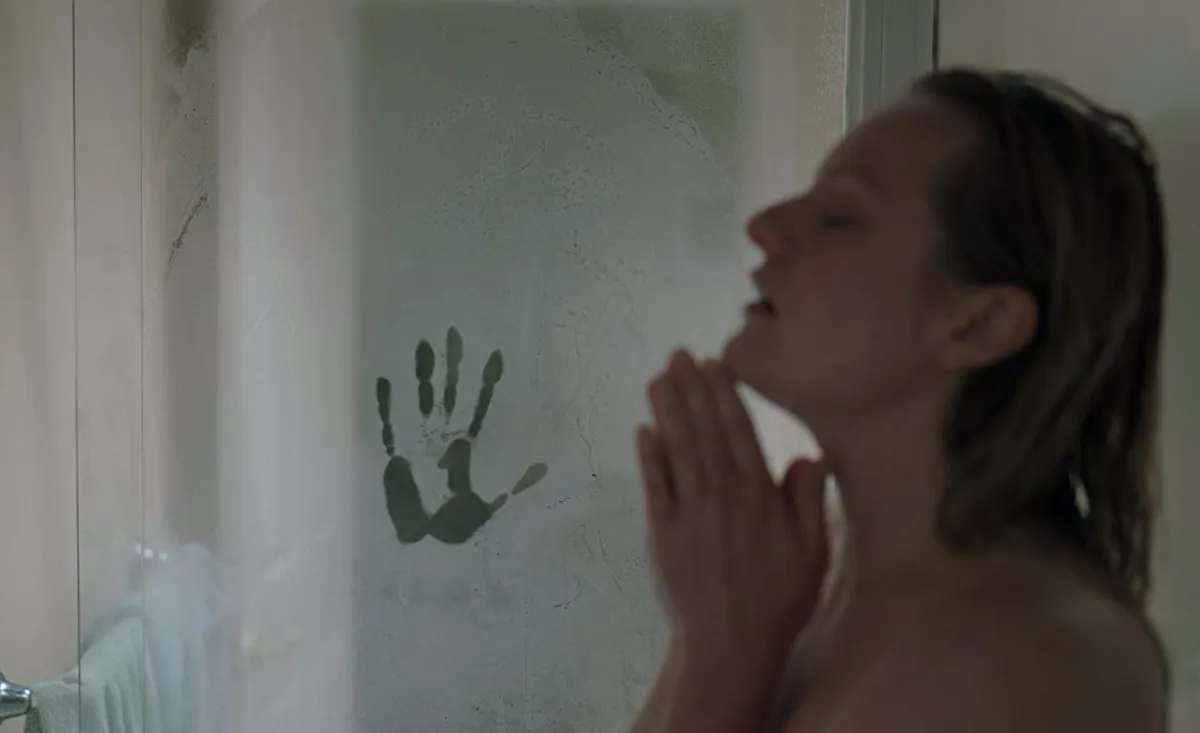Hysteria has always been at the root of a lot of female-led horror films. A woman screaming that something is wrong, something is terribly wrong, but no one listens because the story just seems so far fetched. That is at the root of Leigh Whannell’s 2020 The Invisible Man, which is a remake of the film series from the 1930s, itself an adaptation of a book.
Cecilia (Elizabeth Moss) is trapped in an abusive marriage to a wealthy optics scientist named Adrian Griffin. One night, she manages to escape from him with the help of her sister and their childhood friend James. Adrian “dies” two weeks later, and events start happening around Cecilia that hint at someone stalking her. She quickly figures out that, somehow, her former husband found a way to make himself invisible, and no one believes her.
As we watch Cecilia be ignored and called crazy, it can’t help but bring to mind concepts of female hysteria. Female hysteria was an archaic concept that was once a common medical diagnosis for women, lumping in everything from anxiety to depression to a low sex drive as “hysteria.” It was so broad and unscientific that it was also used as a way for husbands, sons, brothers, etc. to control their female family members, by having them institutionalized or just simply having the threat of it hovering over them. Calling a woman “mad” or “crazy” wasn’t just a throwaway line; it was an accusation that could potentially lead to the loss of their personhood.
Now, I’m already a superstitious person, so if someone I trust came up and told me their abusive ex-boyfriend was a vampire, I would believe them because … why would they make that up? One of the frustrating things about Cecilia not being believed in the story is that in order to “ground” the concept in reality, they set up Adrian to be a genius optics scientist who was already working on this type of technology before she escaped.
If someone told me that Jeff Bezos or the late Steve Jobs had a suit that made them invisible, I would absolutely believe them, let alone someone working on this specific type of technology.
As our Vivian Kane said in her review of the film, it does feel like several films in one, and one of them is this harrowing psychological thriller of a woman trying to escape an emotionally manipulative partner only to be told that she’s “crazy.”
What I love about this film (and horror in general) is how it can really be a voice for the marginalized experience when done thoughtfully. Part of what has been so poignant about Jordan Peele’s work is how he puts these supernatural labels onto existing feelings. “The Sunken Place” and calling someone your “Tether” have now taken off as concepts that have real-world applications to them, because Peele was always pulling from a dark reality.
As Robin Wood once said, “The true subject of the horror genre is the struggle for recognition of all that our civilization represses or oppresses.”
The Invisible Man does that by showing the audience how quickly a woman can go from being believed to being doubted, how easy it is to believe the worst in victims, and how we fail to account for the fact that, yes, it can be that bad. The scariest part of The Invisible Man is thinking about how many stalkers and abusers would do the same thing as Adrian, rather than move on, and how often it can be too late before anyone takes them seriously.
Want more stories like this? Become a subscriber and support the site!
—The Mary Sue has a strict comment policy that forbids, but is not limited to, personal insults toward anyone, hate speech, and trolling.—










Published: Mar 4, 2020 01:14 pm